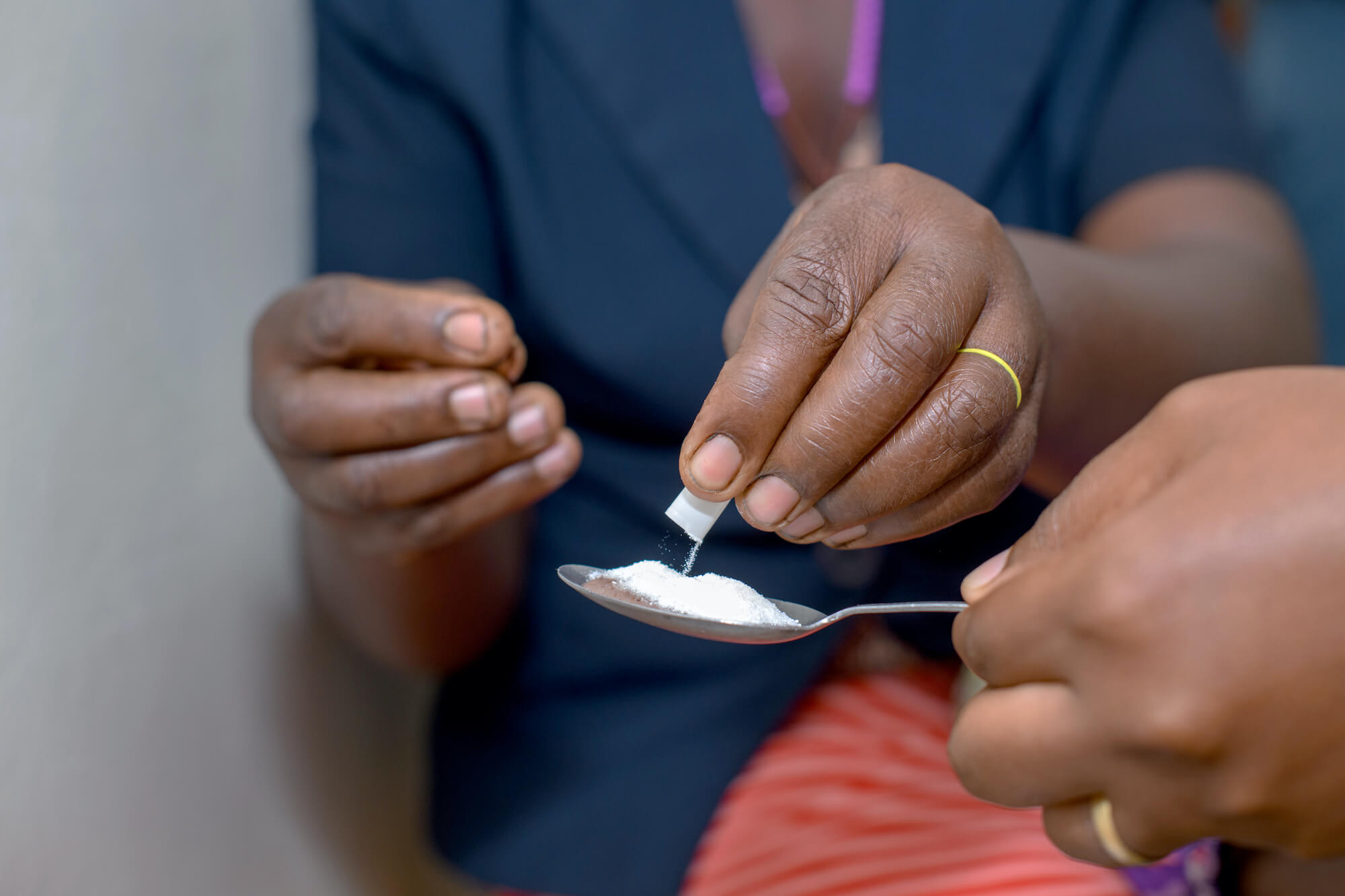Children are not ‘little adults’ when it comes to medicines; their bodies process medicines differently as they mature. Clinical research that ensures new treatments are safe and effective for kids is crucial – as are efforts to develop medicines in formulations that are easy for them to take.
R&D for treatments adapted to children’s needs has lagged far behind R&D for adults. Progress towards closing this gap has been particularly slow for children affected by diseases of poverty that occur in mostly low- and middle-income countries. A 2019 study of clinical trials for NTDs highlights this disparity. Of 369 Phase II-IV trials conducted over an 11-year period, only 17% included patients less than 18 years old; and of the 47 medications WHO recommends for NTDs, just 7 are available in paediatric formulations.1
Without the right treatments for kids, cutting and crushing adult medications and mixing them with liquid or food is an everyday practice for caregivers of infants and young children around the world. This is not only burdensome, but can result in incorrect dosing, increased side effects, and poor treatment efficacy. Too often, treatment is stopped altogether.
Since 2003, DNDi has developed four affordable, child-friendly treatments for HIV, Chagas disease, and malaria that have saved millions of lives. And for the first time in 2019, patients under 18 years of age represented more than 50% of participants enrolled in our clinical trials, thanks to our studies of new treatments for HIV, leishmaniasis, and sleeping sickness.
Here are some examples of how we are working to develop the treatments that children need.
A strawberry-flavoured HIV treatment
Until recently, the only treatments available for babies and young children with HIV were either sub-optimal, bitter-tasting, difficult to dose, or required refrigeration, making them unsuitable for children and their caregivers. With our roots in developing drugs for neglected diseases, Médecins Sans Frontières (MSF) and civil society advocates called on DNDi to apply our R&D experience to help overcome this long‑standing innovation impasse – a major barrier to getting more kids on optimal treatment.
“ Children with HIV have unique needs that are often overlooked, so the development of innovative, heat-stable, palatable, and easy-to-administer treatments is a powerful achievement for Unitaid and partners like DNDi and Cipla. ”
In October 2019, our partner Cipla Ltd submitted our new child-friendly formulation of four antiretroviral medicines, all combined into one capsule, to the US Food and Drug Administration. The ‘4-in-1’, which comes in the form of easy-to-administer, strawberry-flavoured granules that can be sprinkled on food or milk, will be an important part, along with other anticipated innovations, of the long overdue treatment revolution for infants and young children who are at the highest risk of dying without treatment. Our teams are now making preparations to work with countries and a wide range of partners to help ensure rapid scale-up of new and improved treatments for children.

Saving lives, preventing social stigma
Fatal if untreated, visceral leishmaniasis (VL), also known as kala-azar, affects the poorest of the poor, and children are most at risk. Our teams are testing a simpler, safer alternative to the current double-injection VL treatment used in eastern Africa, where the disease often strikes children who are charged with tending cattle and who sleep outdoors. In May 2020, we completed patient enrolment in our Phase III study across seven sites in Ethiopia, Kenya, Sudan, and Uganda. More than 70% of patients in the trial are children.
In Sudan, we are also testing simpler, safer treatments for post-kala-azar dermal leishmaniasis (PKDL), a non lethal complication of VL that can develop months or years after VL treatment has been completed. PKDL skin rashes, which often develop on the face, can be severely disfiguring and stigmatizing. Almost all patients enrolled in our ongoing Phase II trial are under 18.

Championing change
Greater international commitment is urgently needed to ensure children benefit from the fruits of scientific progress. This means examining all opportunities to include children in research from the earliest stages of clinical trial planning, and dedicating sufficient resources for the development, registration, and supply of optimal paediatric drug formulations.
Today, children are included in five of our ongoing Phase III trials – and we plan to reinforce our commitment to meeting children’s needs by launching six more Phase III trials including children by 2028.
Our work on paediatric treatments also provides an entry point for new initiatives to expand testing and treatment for diseases that can be transmitted from mother to child during pregnancy and childbirth, such as Chagas disease and HIV – an approach with tremendous potential to protect the health of women and their babies.
How your donations are used
All contributions large and small have helped advance DNDi’s mission and goals.
88%
Social mission: R&D, strengthening capacity, and advocacy
8%
General management
4%
Fundraising
